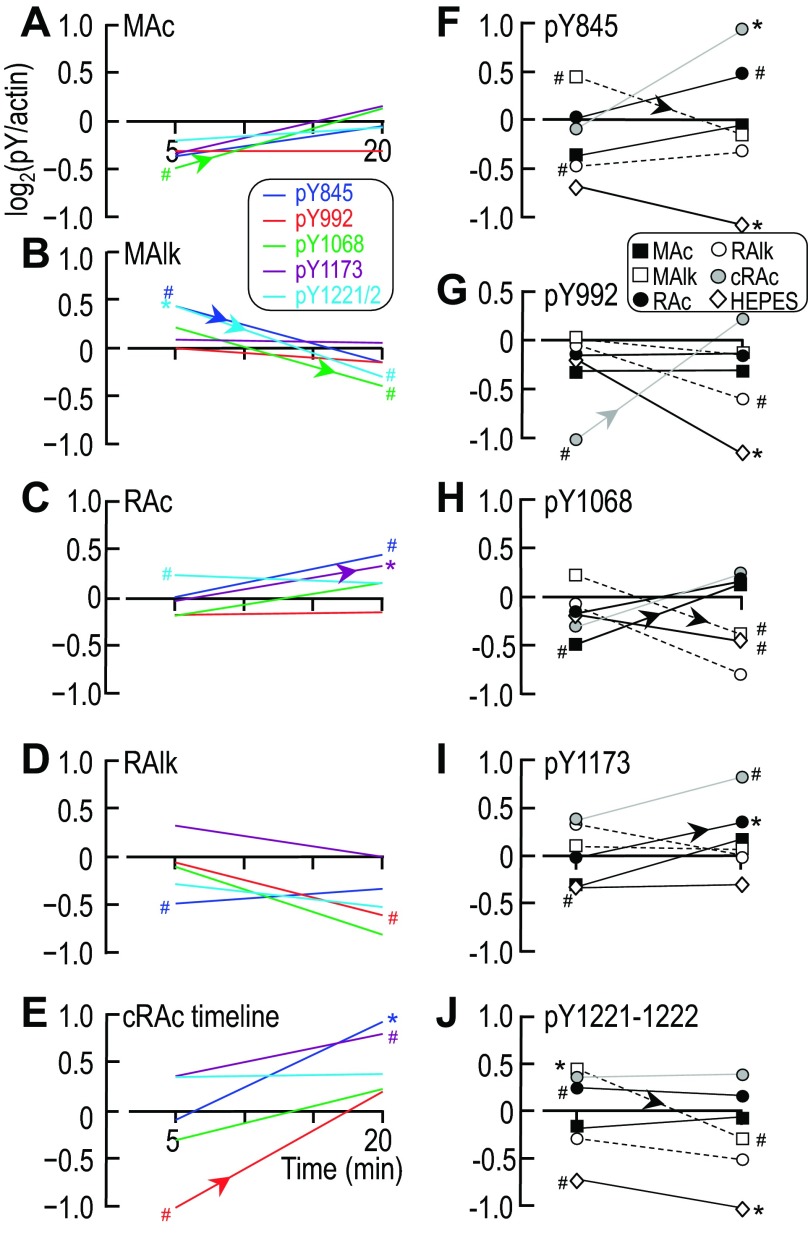Fig. 13.
Time-dependent changes of ErbB1/2 immunoreactivity at individual pY sites. A–E: log2-transformed data for the four individual ErbB1 sites and one compound ErbB2 site, normalized to our Ctrl treatment (5% CO2/22 mM HCO3−), were plotted as a function of time and grouped according to acid-base disturbance. A: MAc. B: MAlk. C: RAc. D: RAlk. E: cRAc. F–J: the same data grouped according to pY site. F: ErbB1-pY845. G: ErbB1-pY992. H: ErbB1-pY1068. I: ErbB1-pY1173. J: ErbB2-pY1221/pY1222. In these analyses, we assume that the pY status at 0 min (i.e., before incubation with each treatment solution) is equivalent to the pY status of that site at 5 or 20 min under Ctrl conditions, where, by definition, log2(pY/actin) = 0. Sample sizes (n) are shown in Figs. 7B, 8B, 10B, and 11B. The upward-sloping or downward-sloping arrows indicate a statistically significant difference between the corresponding values at 5 and 20 min. #Bar for which P < 0.05 (compared with 0 by a one-tailed, paired t-test); in the text, we state that the parameter “tends or tended” to rise/fall. *Bar that is significantly different from 0, even after the very conservative Bonferroni correction (P < 0.05 divided by the number of treatment solutions considered); in the text, we refer to the change as “significant.”

